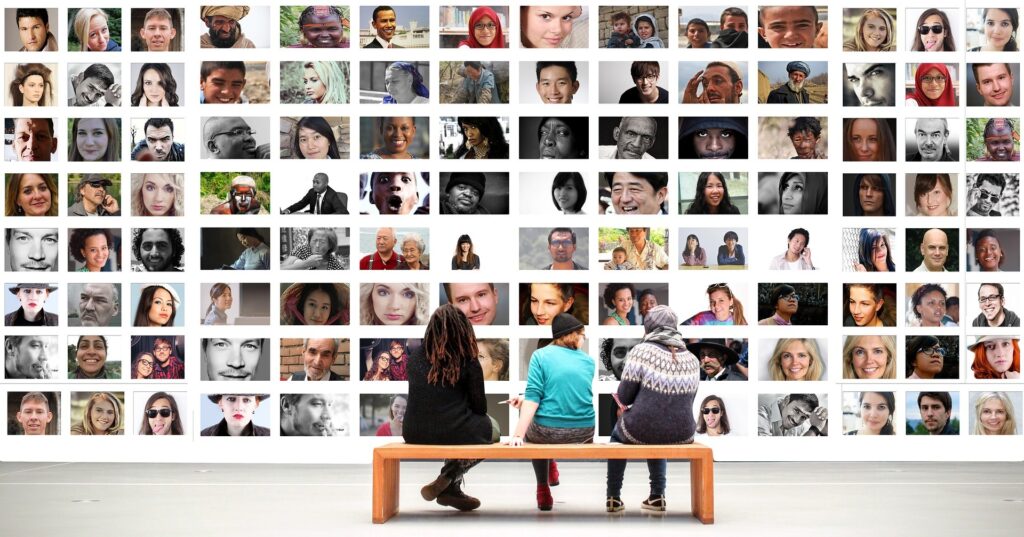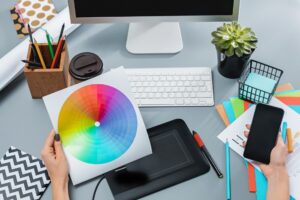No matter how consistent or easy a design is, the world constantly contributes new solutions and styles, causing experiences to diverge. Some UX trends fade out or die a quiet death, while others are so significant that they completely transform our world and how we live in it. In the end, every designer’s obsession can be brought down to one simple question: how do you improve the user’s experience? The challenges to create smooth experiences rise exponentially as more functionalities are added to the body of software. On the other hand, new technologies solve more and more problems. Here are the top six trends that we believe will define 2018.
Trend 1: Immersive Interactivity and importance of animation
Interactivity holds people’s attention for one simple reason: they have more fun browsing through and engaging with an app that really captivates them. It’s just more interesting and, as far as we can see, it generates a positive attitude towards the product, whatever it is. Nowadays, users expect simple interactions with animation included. Users require plenty of experience-creating microinteractions to really engage with an app. A UX inconsistency reduces the user’s efficiency, which in turn devalues the product. Regardless of the technology used, it’s the emotions around interactivity that drive users to connect with the product. Increased richness and anthropomorphism in interface UX design leads to computers or apps influencing the user’s decision-making process.
However, there are few rules. Animations need to focus on goals, so that every move brings the user closer to an ideal experience. Good design reduces the friction and cognitive load of features. In every interaction, it’s our vision which is the main sense – so forms must reflect functions. Designers are responsible for making room for content, and now more than ever. Clarity means silence in the background, so the animated scenario can play its role in experience of the user. Virtual Reality and augmented reality seemed to be game changers, but also they let the designer use existing forms across all internal assets. Interfaces will be more predictable, natural without any need to ‘learn’ how to use them. User satisfaction will be increased by ultra-short response time.
If you want to read more about Animations, check out our article: Microinteractions: The power of Animations in Android Apps
Trend 2: Chatbot Interfaces popularity gain
There is nothing as stimulating as a quick and accurate response to every question that’s bothering you. Imagine all doubts, issues or uncertainties solved instantly. Creating the experience of having a conversation is another big thing for UX design. The usage of artificial intelligence (AI) is growing fast across industries -we wrote about it analyzing software development trends for this year. It transforms the manner in which companies conduct business. For most of us, it changes daily lives. AI has an increasing importance in creative fields such as music, movies, art.
Massive stored data was the primary element in enabling artificial intelligence to participate in the evolution of Chabot success. Chatbot domination arose from a few factors. Just to summarize, a chatbot is a bot program that uses artificial intelligence to mimic human conversation or perform different tasks, typically via a chat or voice interface (it can recognize the human voice in many languages) The cognitive recognition abilities of bots have their beginnings in AI and data science tools. Data became more accessible and open for developers, and, in turn, so was the rapid growth of users.
Predictions based on this technology improve customer experience – and rapidly reduce costs. Bots recognize human behaviors and learn to personalize and customize on a level which was previously unreachable. Powerful data helps chatbots to better understand the content and context of questions. Well-made AI-driven chatbots can deceive users to the point where they’re unable to tell whether they are speaking with a human or a program. This brings software business to new fields, strongly linked to hands-free UI solutions, like automotive self-driven cars. To summarize, chatbots are cheaper, easier and faster to develop and experiment with. They’ve become the best tool for companies to test the market and implement in their campaigns.
Trend 3: Video content popularity gain
Video brings reality into apps. 360 video can be even more immersive, and it has inspired special elements, such as free-form and asymmetry. The video trend has been developing over the past few years. However, it’s only recently that it’s become truly useful, with the rise of such design expressions as realism and bolder visual fragments. There are a few great examples of asymmetry in web design, but all of them intentionally disrupt otherwise static design, and direct user attention point-to-point much more effectively. Video content brings simple, high impact solutions.
The datafication of our lives changes our demands for the details in every situation. For instance, a typical user needs HD for their 360view to truly appreciate a product. The real power of video content lies in its effortless integration into the user’s path. Unlike static graphics, video content can create an experience that completely immerses the user and serves up the goal way more than persuasive conversation. The biggest strengths of video is its marketing power – it is highly visual and auditory, which means it’s easier for many users to remember than text-based content.
ESPEO WAY: Find out our work methodology!
Trend 4: Content-driven experience design
Content-driven UX was born from the union of Content Strategy and User-Centered Design. It is a directive which places content at the center, side-by-side with the users. Any software, whether it’s a website or an app, at its most basic level is mainly content that users interact with.
This raw trend brings a breath of fresh air into the design environment, joining two main forces. The mission critical goal: content has to motivate, influence and invoke user actions. This process will guarantee lead- generation content, which will result in revenue. This new way of working brings about positive changes, like commitment to delivering value, justifying well-defined funding, and transparent priorities. These are especially critical when serving products and platforms with divergent interests, a reliable cadence that customers depend on. Once a content-driven experience design is smoothly operating across releases, correct values tend to be revealed in order of priority. To sum up, content-driven design brings clarity and order to projects while saving precious time.

Trend 5: Augmented reality
Exponential growth in computing power is fueling massive tech advances, such as augmented reality. Virtual reality and augmented reality are the main game changers when it comes to design. AR is integration of digital information, like virtual objects, with the user’s environment in real time. As we established earlier, computers are now able to learn in much the same way as humans do. This leap in AI capabilities has been made possible by the increase in data and computing power.
The next massive step is to make it all work in advance for richer and more varied user experiences. Software engineering gives us three main ways to use this powerful trend. I’m sure we’ve all heard about Pokémon Go – gaming is one of them. Gaming with augmented reality creates absolutely unforgettable gamer experiences. It is capable of utilizing the user’s actual surroundings and involving them in the game scenario.
A different approach involves augmented reality browsers. They enrich camera display on users’ smartphones or other devices with contextual information. The user can have the feeling of having the right information at just the right time. Another way to use AR is AR 3D views. This piece of tech allows users to place 3D models in their environment. It’s easier to pick the right sofa if you’ve seen it in your own living room!
AI is a technical challenge: some experiences rely on gyroscopes, compass and/or GPS. We want the user to go deeper, to have a more realistic immersion (turning their head) so we need the user to ‘wear’ the phone with special glasses. For full spatial movements on a personal scale we need to rely on Tango or ARKit, ARCore, etc. to track the user’s position. In the end, real world examples combined with the proper understanding of AR will help designers determine how to build social media app using this trending technology.
Trend 6: Design system
An effective design system needs to put together great deal of elements to form a truly amazing project. Every element is equally important; each has its value and and an assigned expert. Designers (who create the visual site of the system), front-end developers (who build efficient code), accessibility experts (who check if is matches the set standards), content strategists (who understand needs and can ‘tone up’ the system), researchers (who define customer needs), performance experts (who ensure that system is quick), product managers (whose roles rest on coordination and communication) – they all work together, moving forward in the same direction. A design system is more than just a set of UI style guides. (Read about: 7 tips for good UI design)
It’s also the uniqueness of people and their way of working as a team. It’s the way of expressing values and principles. The main challenge in 2018 will be to make an efficient road map that ‘unites’ the product in accelerated, fluent moves.
Having all these new, enriching elements in mind we still must pay attention to app performance and usability. And importantly – never forget to put the goals of the customer at the center of the whole solution.
For more on UX Design, check out our Guide to strategic UX Process.




